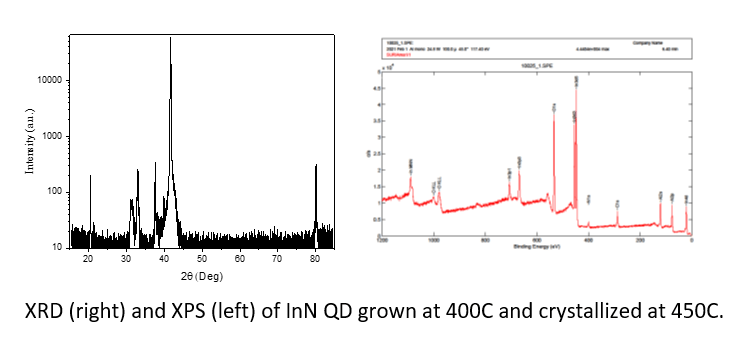Discovery of Topological States in InN Quantum Dots
Student: Malak Refaei
Degree: Ph.D., December 2022
Major Professor: Dr. Morgan Ware
Research Area(s):
Microelectronics & Photonics
Nanoscience & Engineering
Background/Relevance
- The prediction that InN thin films may become a two dimensional (2D) topological insulator results in increasing the research interest of InN.
- Topological insulator can be utilized as quantum bits “qubits” in order to manage quantum information which would provide a potential improvement of quantum computing.
Innovation
- Explore a novel growth technique of InN QDs.
- Investigate the topological state in InN QDs.
Approach
- Growing InN QDs using MBE.
- Grow a low temperature GaN layer to cap InN QDs either through MME or conventional growth techniques in order to protect the InN QDs.
- Photoluminescence is used to probe the QDs.
- Atom Force Microscope (AFM) measurements is used to understand of QD size and distribution
- Fabricate sub-micrometer metal apertures on the surface of the InN/GaN QDs using electron-beam lithography.
Key Results
- Grow several InN QD/Sapphire using droplet technique at different substrate growth temperatures.

Conclusions
- Increasing the substrate growth temperature results in decreasing the dots’ density and increasing the dots’ height.
- To complete crystallization, the morphology of indium nitride QDs can be controlled by nitrogen flux and substrate temperature.
Future Work
- Grow InN/GaN QDs using MBE using droplet technique.
- Find good growth conditions for capping InN with epitaxial GaN.
- Measure photoluminescence emission from InN QDs.
